Muscle Insider
New member
The hips don’t lie. As one of the largest and most integral — seriously, they’re right in the middle of your body — joints in the human body, your hips play many important roles when it comes to proper, healthy movement. This is as true in the weight room as it is on the dance floor. If you...
The post How To Improve Hip Extension (+ Tips From a PT) appeared first on BarBend.
The hips don’t lie. As one of the largest and most integral — seriously, they’re right in the middle of your body — joints in the human body, your hips play many important roles when it comes to proper, healthy movement. This is as true in the weight room as it is on the dance floor.
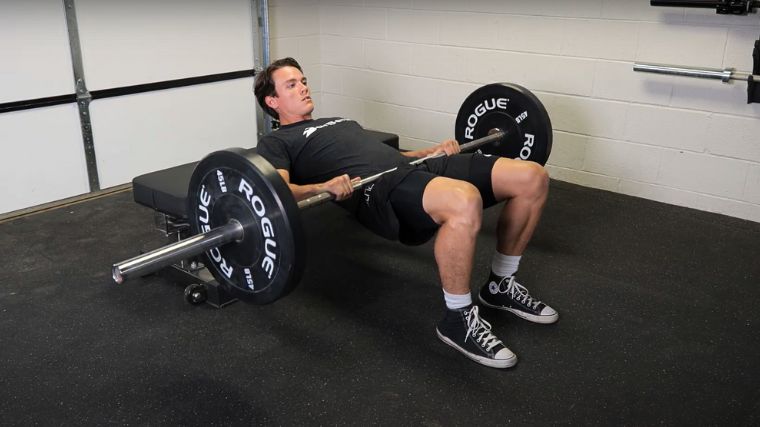
If you want strong, healthy hips, you need to train their most critical function; hip extension. The ability to forcefully extend your hips can make all the difference in the world when you’re going for a new deadlift 1-rep max, performing box jump, pushing a sled, and much more. Here’s everything you need to know about proper hip extension + some industry-backed tips from a Doctor of Physical Therapy.
About Our Expert
Dr. Eugene “Bo” Babenko is a Colorado-based Doctor of Physical Therapy. Dr. Babenko began his passion for human movement in college as a pre-med student before deciding to pursue his Doctorate of Physical Therapy. Babenko is the owner and leading provider at FitCare Physiotherapy in Erie, CO.
Editor’s Note: The content on BarBend is meant to be informative in nature, but it should not be taken as medical advice. When starting a new training regimen and/or diet, it is always a good idea to consult with a trusted medical professional. We are not a medical resource. The opinions and articles on this site are not intended for use as diagnosis, prevention, and/or treatment of health problems. They are not substitutes for consulting a qualified medical professional.
What Is Hip Extension?
Your hip joint is made up of the relationship between two large bones; your pelvis and your two femurs, or thigh muscles. The heads of each femur fit snugly into your hip sockets. Those are your hip joints.
Hip extension is a biomechanical action. “Extension”, in simple terms, means to straighten or lock out a joint. Think of extending your elbow joint by contracting your triceps muscle. Hip extension refers to contracting the muscles around the hips to create a straight line between your legs and torso. When you’re standing upright, you’re in hip extension.
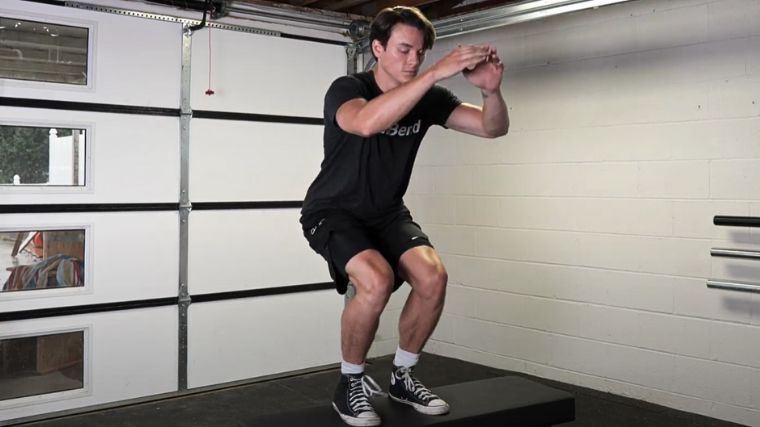
[Read More: The 5 Best Hip Flexor Exercises for Your Leg Day Warm-Up]
Believe it or not, there are 21 unique muscles that cross the hip joint and assist with hip extension and other various biomechanical actions. (1) Here are the main three muscles that create hip extension:
Why You Should Train Hip Extension
From an anthropological perspective, the ability to stand upright is a defining feature of human beings that separates them from other mammals. But in real-world terms, you need hip extension for both everyday life and proper athletic performance.
Think of your favorite lower-body exercises such as the deadlift or squat. To complete those fundamental movement patterns, you need to go from a flexed hip to an extended one, relying solely on the appropriate muscles.
[Read More: The Hyperextension: How To Target Your Glutes And Hamstrings]
Hip extension also impacts everyday behaviors like your gait or stride. Restricted or improper hip extension patterning can negatively affect how you walk, run, jump, jog, and sprint. (3)
From the Expert
Dr. Eugene “Bo” Babenko is a licensed Doctor of Physical Therapy with a clinical concentration on restoring real-world movement functionality. According to Dr. Babenko, training hip extension is both a performance enhancement and a way to manage injury risk:
“The more range of motion we can access and ‘have ownership over,’ the better,” Babenko says. “There’s a general correlation [between hip extension capability] and injury reduction and power production.”
[Read More: 5 Great Hamstrings Exercises for Strong Legs]
Babenko stresses that individuals who can’t properly access hip extension may begin to compensate elsewhere, particularly from the lumbar spine. “This can lead to episodes of back pain,” Babenko says.
3 Best Hip Extension Exercises
If you’re having trouble performing hip extension, you may not need to jump right into a physiotherapist’s office. Oftentimes, basic strength training exercises can teach you how to properly move your body against resistance. Here are a few of the best hip extension exercises you can incorporate into your workouts:
Deadlift
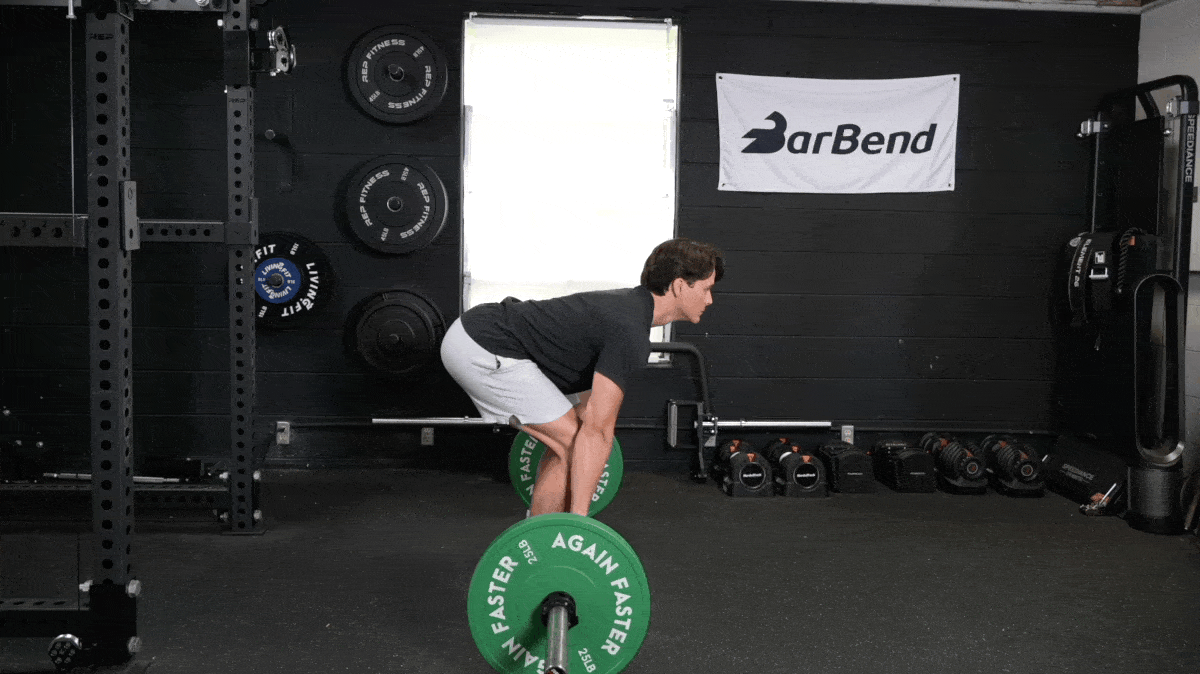
[Read More: 24 Deadlift Variations for Muscle, Strength, Speed, Grip Strength, and More]
Why Do It: The deadlift is probably the most foundational hip extension exercise out there. Your task is simple; bend over and stand up with a barbell (or whatever other type of weight you have). Deadlifts teach you to use your posterior chain to extend your hips while also properly bracing your core.
Equipment Needed: Deadlifts are typically performed with a barbell and plates. However, you can do deadlift variations with kettlebells, dumbbells, a trap bar, and much more if you desire.
[*]Stand close to the weight with a narrow, roughly hip-width stance, and point your toes mostly forward. If you’re using a barbell, leave about an inch of space between the bar and your shins.
[*]Hinge at the hips and bow over with a flat back while reaching down to grab the weight. You should feel a stretch throughout your backside.
[*]If you can’t quite reach the weight, bend your knees slightly and allow them to track forward over your toes to drop down a bit lower. If you’re using a barbell, grab the bar with a double-overhand, shoulder-width grip.
[*]Ensure that your spine is mostly straight and rigid from top to bottom. Inhale into your belly and brace your abs as though you were about to be punched in the gut.
[*]Push into the floor with your legs to begin picking the weight up off the ground.
[*]As the weight passes knee level, aggressively thrust your hips forward to extend your hips and come to a standing position.
Coach’s Tip: All deadlifts begin by pushing into the floor with your legs, then standing up with your hip extensors. Think “push down” then “stand tall” while keeping your arms loose and relaxed.
Hip Thrust
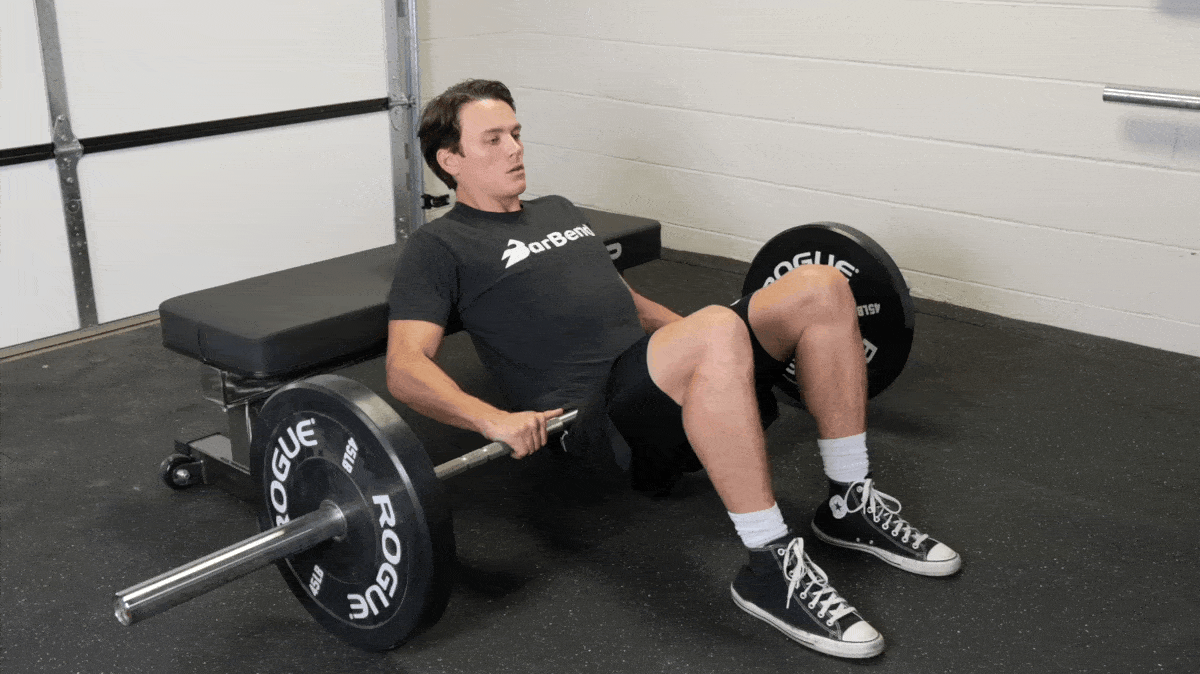
[Read More: Seven Hip Thrust Variations to Build a More Stable Butt]
Why Do It: Many hip extension exercises apply load and stress to the spine. There’s nothing wrong with this for healthy people, but it may not be appropriate for you. The hip thrust allows you to train hip extension without loading your lower back hardly at all.
Equipment Needed: For standard hip thrusts, you’ll need a weight bench, barbell, and some weight plates. You may also want to use a bar pad to reduce discomfort on your hips.
[*]Sit with your upper back against a stable bench with your legs straight out in front of you underneath a loaded barbell.
[*]Roll the barbell into your waist and then scoot your feet back by bending your legs. Place your feet flat on the floor.
[*]Grab the barbell gently and ensure it is snugly packed into your hip crease.
[*]Brace your core and contract your glutes to push the barbell straight up into the air.
[*]Extend your hips until there’s a straight line from your shoulders to your kneecaps.
Coach’s Tip: Avoid tilting your pelvis back and forth when you perform hip thrusts. Think about keeping your torso fully rigid and straightening your body at the waist.
Good Morning
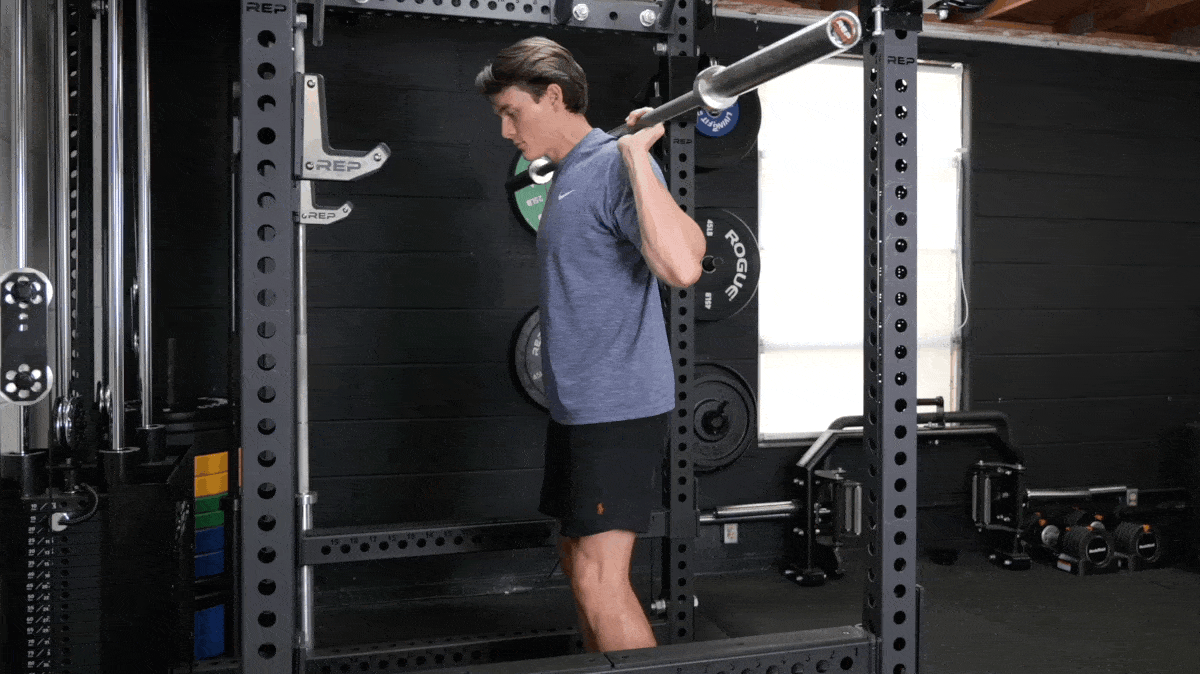
[Read More: 6 Effective Good Morning Exercise Alternatives]
Why Do It: You can think of the good morning exercise as the opposite of a hip thrust. It places lots of tension across your spine while also emphasizing hip extension. Good mornings are an intermediate exercise, but they’re extremely valuable for training your glutes, hamstrings, and lower back — especially if you don’t have access to heavy weights, since even an empty barbell will feel quite challenging.
Equipment Needed: Typically, people perform good mornings with a barbell held across their upper backs. However, you can also clutch a dumbbell to your chest and do them that way.
[*]Unrack a bar from a power rack or squat stand and take a hip-width stance with your feet pointed mostly forward. The bar should rest across your trapezius muscles.
[*]Inhale, brace your core, and then slowly push your hips backward.
[*]Allow your torso to fall forward into a deep bow while maintaining a flat and rigid spine from top to bottom.
[*]You should feel a large stretch in your glutes and hamstrings. When it becomes uncomfortable or your torso reaches parallel to the floor, reverse the motion, pushing your hips forward into extension to stand back up.
Expert Favorites
Dr. Babenko has a few choice recommendations for improving your hip extension outside of your regular workouts. “The lunge pattern is crucial to the work I do with clients and patients,” he says. Babenko also notes that folks with limited hip extension capability also have poor hip internal rotation. Here are a few of his favorite drills to remedy these issues:
https://www.youtube.com/watch?v=YbiX0myaMtIVideo can’t be loaded because JavaScript is disabled: Banded hip mobilization with Zane (https://www.youtube.com/watch?v=YbiX0myaMtI)
[Read More: 4 Mini Band Exercises That’ll Give You Stronger and More Stable Hips]
Babenko stresses the importance of proper core activation as well: “The ‘ribs down’ concept is vital to encouraging glute activation and minimizing compensation from the lumbar spine.”
In simple terms, contracting your abdominal muscles prevents you from using your lower back to straighten your torso. You can practice proper core stabilization with exercises such as:
Benefits of Training Hip Extension
Hip extension isn’t just something you need in the weight room. The ability to engage your hip muscles, especially against resistance, is crucial for both athletic performance and everyday living. By emphasizing hip extension in your workout program, you can expect:
FAQs
Still scratching your head about hip extension? Here are some common questions that contain the answers you seek:
What muscle extends the hip?[/b] The glutes are the primary muscle responsible for hip extension, particularly the large and powerful gluteus maximus. Other relevant muscles include parts of your hamstrings, and even one of the heads of your quadriceps muscle.
How to do hip extension without a machine?[/b] You don’t need fancy gym machines to practice proper hip extension. Many lower back and leg exercises require you to extend your hips; think of any deadlift variations, squats, lunges or even bodyweight exercises like the glute bridge.
Can hip extension exercises help alleviate lower back pain?[/b] Back pain is a complex phenomenon, but most reputable clinicians think there’s a strong relationship between the strength of your hip extensors and potential back pain. Here’s Dr. Babenko:
“An individual being either hyper or hypo-mobile can affect their mobility and stability. A physical therapist can evaluate and determine the correct approach to coordinating healthy, athletic movement.”
References
[*]Neumann D. A. (2010). Kinesiology of the hip: a focus on muscular actions. The Journal of orthopaedic and sports physical therapy, 40(2), 82–94.
[*]Mansfield PJ, Neumann DA. Essentials of kinesiology for the physical therapist assistant. Elsevier Health Sciences; 2018 Oct 23.
[*]Wonsetler EC, Miller EL, Huey KL, Frye SE, Bowden MG. Association Between Altered Hip Extension and Kinetic Gait Variables. Am J Phys Med Rehabil. 2018 Feb;97(2):131-133. doi: 10.1097/PHM.0000000000000840. PMID: 29342022; PMCID: PMC5774225.
[*]Kim WD, Shin D. Correlations Between Hip Extension Range of Motion, Hip Extension Asymmetry, and Compensatory Lumbar Movement in Patients with Nonspecific Chronic Low Back Pain. Med Sci Monit. 2020 Sep 24;26:e925080. doi: 10.12659/MSM.925080. PMID: 32968039; PMCID: PMC7523415.
[*]Ford KR, Myer GD, Brent JL, Hewett TE. Hip and knee extensor moments predict vertical jump height in adolescent girls. J Strength Cond Res. 2009 Jul;23(4):1327-31. doi: 10.1519/JSC.0b013e31819bbea4. PMID: 19528842; PMCID: PMC4010199.
The post How To Improve Hip Extension (+ Tips From a PT) appeared first on BarBend.
Click here to view the article.
The post How To Improve Hip Extension (+ Tips From a PT) appeared first on BarBend.
The hips don’t lie. As one of the largest and most integral — seriously, they’re right in the middle of your body — joints in the human body, your hips play many important roles when it comes to proper, healthy movement. This is as true in the weight room as it is on the dance floor.

If you want strong, healthy hips, you need to train their most critical function; hip extension. The ability to forcefully extend your hips can make all the difference in the world when you’re going for a new deadlift 1-rep max, performing box jump, pushing a sled, and much more. Here’s everything you need to know about proper hip extension + some industry-backed tips from a Doctor of Physical Therapy.
About Our Expert
Dr. Eugene “Bo” Babenko is a Colorado-based Doctor of Physical Therapy. Dr. Babenko began his passion for human movement in college as a pre-med student before deciding to pursue his Doctorate of Physical Therapy. Babenko is the owner and leading provider at FitCare Physiotherapy in Erie, CO.
Editor’s Note: The content on BarBend is meant to be informative in nature, but it should not be taken as medical advice. When starting a new training regimen and/or diet, it is always a good idea to consult with a trusted medical professional. We are not a medical resource. The opinions and articles on this site are not intended for use as diagnosis, prevention, and/or treatment of health problems. They are not substitutes for consulting a qualified medical professional.
What Is Hip Extension?
Your hip joint is made up of the relationship between two large bones; your pelvis and your two femurs, or thigh muscles. The heads of each femur fit snugly into your hip sockets. Those are your hip joints.
Hip extension is a biomechanical action. “Extension”, in simple terms, means to straighten or lock out a joint. Think of extending your elbow joint by contracting your triceps muscle. Hip extension refers to contracting the muscles around the hips to create a straight line between your legs and torso. When you’re standing upright, you’re in hip extension.

[Read More: The 5 Best Hip Flexor Exercises for Your Leg Day Warm-Up]
Believe it or not, there are 21 unique muscles that cross the hip joint and assist with hip extension and other various biomechanical actions. (1) Here are the main three muscles that create hip extension:
- Glutes: The gluteal muscles are the primary hip extensors, particularly the gluteus maximus.
- Hamstrings: The muscles in your hamstrings, including the biceps femoris long head, semitendinosus, and semimembranosus all contribute to hip extension because they connect from your femur to your pelvis.
- Quads: Believe it or not, one of the muscles in your quadriceps, the adductor magnus, actually contributes to hip extension as well. This is because the adductor magnus is biarticular and connects onto the pelvis and can help pull it forward into extension. (2)
Why You Should Train Hip Extension
From an anthropological perspective, the ability to stand upright is a defining feature of human beings that separates them from other mammals. But in real-world terms, you need hip extension for both everyday life and proper athletic performance.
Think of your favorite lower-body exercises such as the deadlift or squat. To complete those fundamental movement patterns, you need to go from a flexed hip to an extended one, relying solely on the appropriate muscles.
[Read More: The Hyperextension: How To Target Your Glutes And Hamstrings]
Hip extension also impacts everyday behaviors like your gait or stride. Restricted or improper hip extension patterning can negatively affect how you walk, run, jump, jog, and sprint. (3)
From the Expert
Dr. Eugene “Bo” Babenko is a licensed Doctor of Physical Therapy with a clinical concentration on restoring real-world movement functionality. According to Dr. Babenko, training hip extension is both a performance enhancement and a way to manage injury risk:
“The more range of motion we can access and ‘have ownership over,’ the better,” Babenko says. “There’s a general correlation [between hip extension capability] and injury reduction and power production.”
[Read More: 5 Great Hamstrings Exercises for Strong Legs]
Babenko stresses that individuals who can’t properly access hip extension may begin to compensate elsewhere, particularly from the lumbar spine. “This can lead to episodes of back pain,” Babenko says.
3 Best Hip Extension Exercises
If you’re having trouble performing hip extension, you may not need to jump right into a physiotherapist’s office. Oftentimes, basic strength training exercises can teach you how to properly move your body against resistance. Here are a few of the best hip extension exercises you can incorporate into your workouts:
Deadlift

[Read More: 24 Deadlift Variations for Muscle, Strength, Speed, Grip Strength, and More]
Why Do It: The deadlift is probably the most foundational hip extension exercise out there. Your task is simple; bend over and stand up with a barbell (or whatever other type of weight you have). Deadlifts teach you to use your posterior chain to extend your hips while also properly bracing your core.
Equipment Needed: Deadlifts are typically performed with a barbell and plates. However, you can do deadlift variations with kettlebells, dumbbells, a trap bar, and much more if you desire.
[*]Stand close to the weight with a narrow, roughly hip-width stance, and point your toes mostly forward. If you’re using a barbell, leave about an inch of space between the bar and your shins.
[*]Hinge at the hips and bow over with a flat back while reaching down to grab the weight. You should feel a stretch throughout your backside.
[*]If you can’t quite reach the weight, bend your knees slightly and allow them to track forward over your toes to drop down a bit lower. If you’re using a barbell, grab the bar with a double-overhand, shoulder-width grip.
[*]Ensure that your spine is mostly straight and rigid from top to bottom. Inhale into your belly and brace your abs as though you were about to be punched in the gut.
[*]Push into the floor with your legs to begin picking the weight up off the ground.
[*]As the weight passes knee level, aggressively thrust your hips forward to extend your hips and come to a standing position.
Coach’s Tip: All deadlifts begin by pushing into the floor with your legs, then standing up with your hip extensors. Think “push down” then “stand tall” while keeping your arms loose and relaxed.
Hip Thrust

[Read More: Seven Hip Thrust Variations to Build a More Stable Butt]
Why Do It: Many hip extension exercises apply load and stress to the spine. There’s nothing wrong with this for healthy people, but it may not be appropriate for you. The hip thrust allows you to train hip extension without loading your lower back hardly at all.
Equipment Needed: For standard hip thrusts, you’ll need a weight bench, barbell, and some weight plates. You may also want to use a bar pad to reduce discomfort on your hips.
[*]Sit with your upper back against a stable bench with your legs straight out in front of you underneath a loaded barbell.
[*]Roll the barbell into your waist and then scoot your feet back by bending your legs. Place your feet flat on the floor.
[*]Grab the barbell gently and ensure it is snugly packed into your hip crease.
[*]Brace your core and contract your glutes to push the barbell straight up into the air.
[*]Extend your hips until there’s a straight line from your shoulders to your kneecaps.
Coach’s Tip: Avoid tilting your pelvis back and forth when you perform hip thrusts. Think about keeping your torso fully rigid and straightening your body at the waist.
Good Morning

[Read More: 6 Effective Good Morning Exercise Alternatives]
Why Do It: You can think of the good morning exercise as the opposite of a hip thrust. It places lots of tension across your spine while also emphasizing hip extension. Good mornings are an intermediate exercise, but they’re extremely valuable for training your glutes, hamstrings, and lower back — especially if you don’t have access to heavy weights, since even an empty barbell will feel quite challenging.
Equipment Needed: Typically, people perform good mornings with a barbell held across their upper backs. However, you can also clutch a dumbbell to your chest and do them that way.
[*]Unrack a bar from a power rack or squat stand and take a hip-width stance with your feet pointed mostly forward. The bar should rest across your trapezius muscles.
[*]Inhale, brace your core, and then slowly push your hips backward.
[*]Allow your torso to fall forward into a deep bow while maintaining a flat and rigid spine from top to bottom.
[*]You should feel a large stretch in your glutes and hamstrings. When it becomes uncomfortable or your torso reaches parallel to the floor, reverse the motion, pushing your hips forward into extension to stand back up.
Expert Favorites
Dr. Babenko has a few choice recommendations for improving your hip extension outside of your regular workouts. “The lunge pattern is crucial to the work I do with clients and patients,” he says. Babenko also notes that folks with limited hip extension capability also have poor hip internal rotation. Here are a few of his favorite drills to remedy these issues:
https://www.youtube.com/watch?v=YbiX0myaMtIVideo can’t be loaded because JavaScript is disabled: Banded hip mobilization with Zane (https://www.youtube.com/watch?v=YbiX0myaMtI)
[Read More: 4 Mini Band Exercises That’ll Give You Stronger and More Stable Hips]
- Banded hip mobilizations
- Couch stretch
- Lunge variations
Babenko stresses the importance of proper core activation as well: “The ‘ribs down’ concept is vital to encouraging glute activation and minimizing compensation from the lumbar spine.”
In simple terms, contracting your abdominal muscles prevents you from using your lower back to straighten your torso. You can practice proper core stabilization with exercises such as:
- Hollow Hold
- Plank or Weighted Plank
- Bird Dog
- Dead Bug
- Side Plank
Benefits of Training Hip Extension
Hip extension isn’t just something you need in the weight room. The ability to engage your hip muscles, especially against resistance, is crucial for both athletic performance and everyday living. By emphasizing hip extension in your workout program, you can expect:
- Improved Posture: Studies show that weak hip extensors can contribute to poor posture and stride mechanics. (4)
- Better Athletic Performance: Hip extension is crucial for most sports and is strongly correlated with athletic tests like vertical jump height. (5)
- A Bigger, Stronger Butt: Expect a bigger, beefier backside if you regularly train hip extension. By loading your glutes, hamstrings, and lumbar spine through their full ranges of motion, you’ll encourage substantial amounts of muscle hypertrophy.
- Reduced Back Pain: Clinical data show a marked correlation between limited hip extension capability and incidences of back pain. (4) “I absolutely believe there’s a strong relationship,” Babenko says. “A good clinician can determine if an individual’s mobility or stability in their kinetic chain will lead to further issues.”
FAQs
Still scratching your head about hip extension? Here are some common questions that contain the answers you seek:
What muscle extends the hip?[/b] The glutes are the primary muscle responsible for hip extension, particularly the large and powerful gluteus maximus. Other relevant muscles include parts of your hamstrings, and even one of the heads of your quadriceps muscle.
How to do hip extension without a machine?[/b] You don’t need fancy gym machines to practice proper hip extension. Many lower back and leg exercises require you to extend your hips; think of any deadlift variations, squats, lunges or even bodyweight exercises like the glute bridge.
Can hip extension exercises help alleviate lower back pain?[/b] Back pain is a complex phenomenon, but most reputable clinicians think there’s a strong relationship between the strength of your hip extensors and potential back pain. Here’s Dr. Babenko:
“An individual being either hyper or hypo-mobile can affect their mobility and stability. A physical therapist can evaluate and determine the correct approach to coordinating healthy, athletic movement.”
References
[*]Neumann D. A. (2010). Kinesiology of the hip: a focus on muscular actions. The Journal of orthopaedic and sports physical therapy, 40(2), 82–94.
[*]Mansfield PJ, Neumann DA. Essentials of kinesiology for the physical therapist assistant. Elsevier Health Sciences; 2018 Oct 23.
[*]Wonsetler EC, Miller EL, Huey KL, Frye SE, Bowden MG. Association Between Altered Hip Extension and Kinetic Gait Variables. Am J Phys Med Rehabil. 2018 Feb;97(2):131-133. doi: 10.1097/PHM.0000000000000840. PMID: 29342022; PMCID: PMC5774225.
[*]Kim WD, Shin D. Correlations Between Hip Extension Range of Motion, Hip Extension Asymmetry, and Compensatory Lumbar Movement in Patients with Nonspecific Chronic Low Back Pain. Med Sci Monit. 2020 Sep 24;26:e925080. doi: 10.12659/MSM.925080. PMID: 32968039; PMCID: PMC7523415.
[*]Ford KR, Myer GD, Brent JL, Hewett TE. Hip and knee extensor moments predict vertical jump height in adolescent girls. J Strength Cond Res. 2009 Jul;23(4):1327-31. doi: 10.1519/JSC.0b013e31819bbea4. PMID: 19528842; PMCID: PMC4010199.
The post How To Improve Hip Extension (+ Tips From a PT) appeared first on BarBend.
Click here to view the article.

